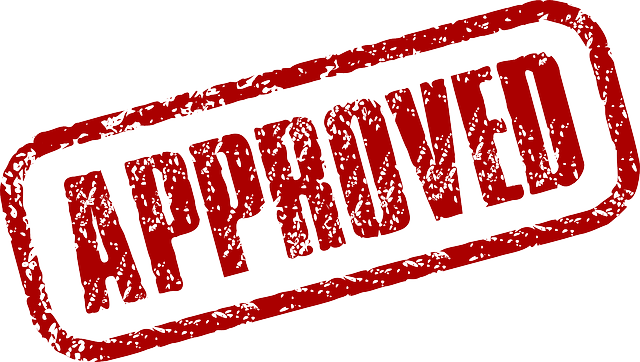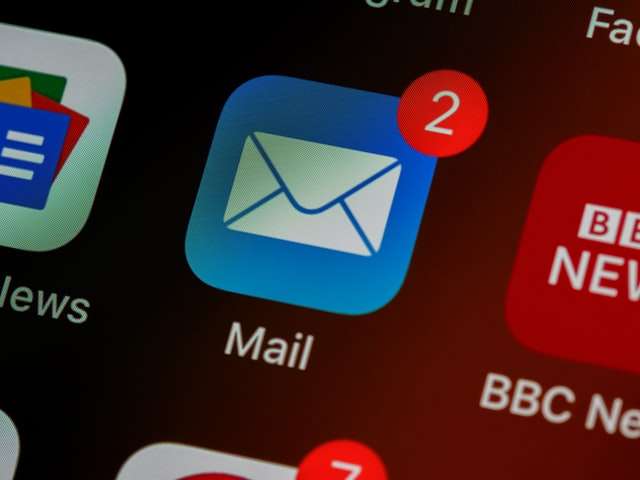
by Suellen | Meeting the Challenges, Online Success
Success Tip: Get an Accountability Partner
Growing your mindset isn’t easy and requires a lot of work. There are going to be times you’re tempted to give up or not do your growth exercises “just this once.” Having a support network to encourage you and guide you is essential to get you over these humps.
And just as I’ve suggested, one of the most important support people you can have in your corner is an accountability partner!
An accountability partner is someone who has agreed to keep you on track and making progress. It doesn’t have to be someone else who’s trying to grow their mindset or who’s already done so. It doesn’t even need to be someone who believes in what you’re doing.
So who could be this person? Someone who is good at making other people take responsibility and who is willing to help you.
People use accountability partners for all kinds of things, from maintaining a workout plan to following through on starting a business. It’s a popular and well-studied method of increasing follow-through.
There are several ways to do this. One is to schedule a “coach type” partner. It’s a one-way obligation. The coach checks up on you and your progress. The other is more like a mastermind partner. The two of you keep check on each other.
Either one will work. You have to decide which would be best for you.
Here’s how it works for growth mindset work: you develop a detailed plan for cultivating your growth mindset. It needs to be specific -you’re going to try X new things each week, confess the Word daily, and so forth. You give a copy of your plan to your accountability partner. The partner gives input into the plan and suggests if it’s too ambitious or not ambitious enough.
Your partner will then check in on you at specified times to see if you’re on track.. (Or if it’s a mastermind, you decide certain dates you will check on each other). Once a week is a good marker to start with. Did you do what you said you would? Why or why not?
You need a partner who doesn’t take excuses lightly. (What do you mean you didn’t do your affirmations this week? Were you unconscious in the hospital?)
The possibility of facing up to not following through on your commitments is enough to get most people to stick with the program. Others need more incentives, such as agreeing with the partner to donate a significant amount of money to a cause they abhor if they don’t follow through.
Having an accountability partner is one of the most effective ways to increase follow-through. Most people find a friend, family member, colleague, or support group member to be their accountability partner,. If that’s not an option for you or no one has the right personality, consider finding a life coach to fill this role.
Either way, being accountable to someone is one of the major keys to success.
While you are doing this, you might find your secret dreams coming true. Check out this PLR Package for you and your clients.

by Suellen | Meeting the Challenges, Online Success, Vision and Goals
Remember: Success doesn’t just happen, it comes to those who pursue it! And part of that pursuit is periodic monitoring of progress.
Some might call this “reflection.”
Reflection is an important tool you can use to grow your mindset. Use it regularly, and you’ll see great benefits. You should aim to reflect at least 2-3 times a week and preferably daily. This will help you identify what you’re doing right, what your current issues are, and where you should correct course.
These reflection questions are designed to help you do that on a daily, weekly, and monthly basis. Keep track of your progress by writing out the answers in a notebook or file and keep them to look back on later. Periodically you can review your old answers and see how far you’ve come.
Just a few minutes: 5 minutes, 10 minutes, and 30 minutes, respectively will do the trick. You’ll be glad that you took that time!
Daily Questions
1.) What is one thing that went right today and why did it go right?
2.) What is one thing that went wrong today and is there anything I can do to change the outcome when this situation presents itself again?
3.) What did I do to improve myself today?
Weekly Questions
1.) What was my biggest success this week? Why did I succeed at it? How can I replicate this success in the future?
2.) What was my biggest failure this week? What caused it? How can I change things to prevent it from happening again?
3.) What did I do to improve my mindset this week?
4.) What did I learn this week?
5.) How much progress did I make toward my goals this week? Did I meet this week’s milestone? Why or why not?
Monthly Questions
1.) What went right this month and why? Is there a pattern to my successes throughout the month? How can I keep these things going in the future?
2.) What went wrong this month and why? Is there a pattern to my failures this month? How can I change to stop this pattern from repeating next month?
3.) What are the most important lessons I have learned this month? How can I implement them into my life for next month?
4.) What have I done to improve my mindset this month? Is it working? Should I try something else next month?
5.) What progress have I made toward my goals in the past month? Am I closer or farther away? Are there obstacles that have arisen? What can I do to speed up my progress?
These simple questions can be powerful if you check them routinely.
Course correction is the key one of your keys to success in anything. Your mindset will grow and your vision will increase with these simple periodic checks.
Power up your life and your business with this Done-for-you package Releasing the Power of Prayer

by Suellen | Meeting the Challenges, Online Success, Vision and Goals
Failure!! Ugh!! No one likes it!
Everyone wants to succeed, preferably on the first try. Unfortunately, that’s not realistic. You’re going to fail on your journey to improve your mindset and change your life. You’re probably going to fail many times.
If you are reaching out for growth, you will fail sometimes. Remember the stories. Babe Ruth for many years held the record for most Home Runs in Baseball. (He also held the record for most Strike Outs). Thomas Edison is well known for inventing the light bulb. (What isn’t as well known is that he finally succeeded after 10,000 attempts).
So failure is a stepping stone on the way to success! Think of it that way.
So how should you handle failure constructively without getting frustrated? These tips should help you.
1.) Figure out why you failed. Look at your failure analytically. What caused it? What did you do wrong? Is there something you could do differently next time? Or was the failure outside of your control?
2.) Change things before you try again. Did you approach the problem wrong? Change how you do it next time. Were the conditions wrong, the timing? Were you adequately prepared? These are all things you can remedy before your next attempt.
3.) Ask for help. Don’t be a lone wolf! Life is hard, and challenges often require the input of more than one person. Find someone with more knowledge and experience than you and ask them to mentor you or help you solve the problem. You can find someone to help you with any problem, big or small, from an academic issue to work problems to dating. You just have to ask!
4.) Look at and appreciate the progress you’ve made. Sure, you might have failed, but did you learn something? Are you further along than you were before? Of course. Look at how far you’ve come since you started on this journey. Appreciate it and congratulate yourself before tackling your failure again.
5.) Consider adjusting your expectations. In other words, did you try to go too far too fast? You’re not going to create a masterpiece (or become CEO) overnight. Did you try to improve too much at once? Look at your expectations and adjust them before trying again. Remember the one-percent rule -improving by one percent each attempt will get you to your goal faster than trying (and failing) to make big leaps.
Above all, don’t give up! You can reach any goal you set your mind to. You just need to find the right way. It took Thomas Edison over 10,000 tries to invent the light bulb. He used to say that he hadn’t failed; he’d just found 10,000 ways that wouldn’t work!
You can put this knowledge to work for yourself. Follow the tips above to evaluate your failure, adjust what you’re doing, and try again. You can do it.
For more hints on Goal Setting for you and your clients, go HERE.

by Suellen | Email Marketing, Online Success
Today marks the last day of our 30 Day Email Marketing Challenge. We looked at many aspects of our marketing habits, and hopefully discovered some areas for improvement.
I certainly did!
As I have delved into the many aspects of maximizing email success, I have learned – or relearned – bunches. It’s good to take an inventory – or audit – of our practices so that we can improve and continue to grow.
As a reminder, email marketing is the most effective marketing strategy to date. Even compared to social media marketing. Your industry or niche doesn’t really matter; you will see a high return on investment if you implement the proper email marketing tips and strategies in any niche.
As a recap: Here are the major areas you need to refine in order to maximize your process.
- Enhance your Opt-Ins and Freebies for Higher Subscription Rates
You must generate leads by strengthening your opt-in forms and your offers.
Small eBooks, discount codes, or simple newsletters are a great place to start. Make sure the opt-in offer you use is what your readers want or need, and be sure to execute on that promise as soon as possible. If you know your audience struggles in a certain area, then this is the best place to start when developing opt-in or lead magnet content.
2. Value Your Subject Lines
While subject lines are short and sweet, you should take the time to craft the most compelling ones. In fact, you should create at least two to three for every email you send and test them among different subscribers to pick the ones with the best return.
3. Perfect Your Calls-To-Action
Always include a call-to-action and be sure it is consistent between email and campaign.
Don’t add more than one type of call-to-action per email, or you will likely confuse your subscribers. Instead, pick one goal and then perfect the call-to-action to optimize your chances of accomplishing it.
4. Focus on Personalization and Quality Content
A huge benefit to email marketing is how powerfully it can increase your authority, credibility, and trust as a brand. The more personalized, engaging, and valuable the email content, the more likely you will convert your subscribers to paying customers.
Valuable and quality content is key to gaining the trust of your followers. They must believe in your word.
Your honesty, integrity, and high quality products allow your subscribers to get to know you and learn to trust you. As they know you better, they will trust you more with their time and money.
5. Create Multiple Landing Pages for Each Campaign
This one is a bonus. We really haven’t talked about landing pages much. Yet they add a new dimension to your marketing plan.
If boosting your sales is your email marketing goal, as it is for many, then you must create landing pages for each campaign you create. Landing pages are sales pages that further describe, entice or invite someone to join or purchase your products.
Your call-to-action should lead them right to the landing page. From that page they can purchase your products, join a group, or sign up for your next project.
Some themes and many email providers have landing pages available to make this step easy.
Some pages are pre-designed and all you have to do is change the pictures and text in order to have professional looking landing pages.
So there you have it. A wrap up of our challenge.
Each piece is an important piece of the email success puzzle. As you evaluate your practices, you will find some “aha” moments when you’ll see how to accomplish something better.
You’ll find that working on each part of the email marketing process will be your key to success.
If you’ve missed some posts, you can read back through them. I think you’ll find some great ideas or reminders which will boost your email success.

by Suellen | Email Marketing, Online Success
What do you do with your email clients after they sign on and receive your welcoming sequence?
What about the next months – years -as you go along? Not all of them even open your emails – let alone purchase from you. Don’t be offended by that. People are busy and they receive so many emails.
Yet there are ways to continue to nurture your list so that you will keep them coming back. And maybe even the open-less customers will wake up and respond.
When planning my approach, I always think about my reaction to others’ emails. There are some which I hadn’t opened ever. Maybe I was too busy. Or maybe the subject matter didn’t seem to blend with my projects. Then one day I was working on something and their email seemed to hit the spot. I opened, clicked, and bought – after many months of unopened emails.
I remember one marketer who had a temper tantrum one day and blasted his list for not opening his emails. Oops! That is not the approach you want to take. You must realize that your people are busy and respect their decision to open or not at any given moment.
There are better ways to encourage your clients to open, click, and buy from you.
So let’s look at a few of these ways to nurture your leads.
Lead nurturing is about keeping up with your leads or potential clients and ensuring they don’t go “cold” or unsubscribe. To do this, you must send information beyond sales or promotional content. You must give them information and encouragement to bolster their morale and their business.
In return, this improves your return on investment, your credibility, and your reputation as a business.
Interestingly, companies have reported that lead nurturing campaigns make them the most revenue. In other words, without nurturing their leads, they likely wouldn’t have a successful business today.
So let’s look at five strategies…
Send Out a Weekly Educational Series
Send about one to two weekly emails about how to use your products, services, or anything related to the industry or the problem you solve for your audience. This establishes your authority in the industry and shows your readers that your products or services are right for them.
Anyone doing business online is always looking for better ways to do business. When you provide this free information, your emails will increase in value for them.
Invite Your Customers to Other Platforms
Send a reminder to let your readers know that they can find you on other platforms as well. This allows you to engage more with your audience and opens more doors to market them. It also provides you more information on your audience behaviors to further improve your content and communication methods.
Send “Thank you” Emails
Don’t forget to recognize their participation or purchase. To establish a deeper connection, send a “thank you” message any time they join your campaign or purchase a product.
Ask Questions and Solicit Personalized Feedback
Encourage your readers to reply, ask questions or provide feedback to improve your process. Not only does this provide you direct areas to improve upon, but it also shows your readers that you value their options and are truly there to help.
Oh, and when they reply, read their responses. Be sure to follow through!
Segment By Buyer Stage or Persona
Be sure to segment your readers depending on what stage of the buying process they are in. Those throughout the funnel should be getting different material depending on their stage.
For example, those at the top of the funnel should receive a welcome email and onboarding sequence.
People in the middle should get educational materials and encouragement to continue.
Finally, your long-term customers receive more promotions along with the nurturing emails. The more you segment and refine your list, the better you will meet their needs, and the better your conversions will be.
The potential for you to increase your revenue is incredible if you pay close attention to lead nurturing.
Lead nurturing improves your relationships with your customers and can dramatically increase your return on investment. Sending thank-you’s, educational material, encouragement and answers to feedback can lead to a growing, prosperous list.
And that means more friends and more money!

by Suellen | Email Marketing, Online Success
They signed up for your email list. That’s terrific!
So what’s next?
Next is what is called the “Onboarding Sequence.” The sequence of emails you send out immediately. Obviously, this sequence should be on your autoresponder. So they will automatically receive these emails – immediately, then the next day or two, then a week later, etc.
Just signing up for your email doesn’t mean that the person will be a super customer. But then again, they may be the best customer you will ever have.
So you want to welcome them and give them a chance to see what you are all about. What you have to offer and if this is a good fit.
I would like to share some tips which will help you optimize your sequence
Always Start with A Confirmation
This is vital to ensure the deliverability of your email. Sometimes subscribers fill in the wrong information and they never receive the email. However, a double-opt-in form where the reader must confirm their address reduces this chance.
A confirmation is also a great way to personalize your introduction and further increase their interest.
Focus On Benefits Not Features
When subscribers first join, show them the benefits you promised in the opt-in. Don’t just list features.
This is probably the number one rule for sales anywhere.
You can list tons and tons of features. But what they want to hear is how it benefits them.
For instance, a feature might be: I will send you a daily scripture verse. The benefit: You can start your day full of faith with the impactful daily scripture verse I’ll send.
A feature: I have a huge selection of courses on how to write and publish your book. The benefit: You will have guidance every step of the way as you listen to my instruction on book publishing.
So you see the difference? The feature is what you have to offer. The benefit is how the feature will impact them.
To really understand this difference, think about automobile commercials. They don’t major on what’s under the hood. They display the dream that beautiful girls will flock to the guys who drive this car. Or that if you have this car, you can get away from all of the city hustle and enjoy the beauty and adventure of a secluded trail in the mountains.
You can see what I’m saying. When you are introducing yourself, try to focus on what they will get out of hanging around you.
Also, provide real value. Give them instant satisfaction by joining your list with hardly anything in return.
Develop Inactive and Active Reader Sequences
Be sure to segment your list in terms of their behavior and how they respond to your emails. If they don’t click them, they should be moved into different sequences or emails to persuade their interest further. This way, you know every email you send can accomplish its goal more effectively.
Use Calls-To-Action to Accomplish Your Goals
Make sure that every email has a call-to-action. Show and tell your subscribers what you need them to do in exchange for all the valuable content you provide through email. Make them clear and straight to the point.
Actually clicking on your links and buttons helps solidify the loyalty of your customers.
Be Fun and Engaging
Personalize and humanize your content. Speak to them as if you were talking to a friend, not a business lead. You want to focus on growing their trust and show them that you are worth the time and effort.
Invite them to other platforms or ask them to reply to your email to get them to interact, engage and feel connected.
Keep It Short and To the Point
Your email copy length should be around 125 to 250 words or so. You don’t want to offer too much information all at once. Instead, each email should guide them along short and different journeys that all work together to share a similar message or goal.
Provide Generous Incentives
Make it even clearer to your new subscribers that you value their time by providing generous incentives that align with your call-to-action.
Free and low cost options. A chance to join a group.
These are a couple of ways that you can encourage your people to know that you are interested in them. It’s also a way that you can gain influence with your offers.
As you can see, the Onboarding experience is more than just acquiring new subscribers. It’s about showing them the value you have to offer and what your company is about.
Finally, it’s about exceeding their expectations and giving them a great experience to transition into a loyal subscriber and customer.

















